Understanding Safety Signs
Signs are used to prevent accidents. They are common in the work area, along the roadside, and in public buildings. OSHA has some specific requirements for signs. The requirements are in place to make sure hazard warnings are easy to recognize and don’t vary from workplace to workplace.
OSHA defines signs as “the warnings of hazard, temporarily or permanently affixed or placed, at locations where hazards exist.”
Danger signs must only be used where an immediate hazard exists. Their appearance is specified by OSHA. These signs are red, black (or contrasting color), and white with room for words or symbols to describe the danger. Danger signs are common in areas where high voltages exist and where automatically-starting equipment is in use. You may be aware of other hazards which warrant the use of a danger sign.
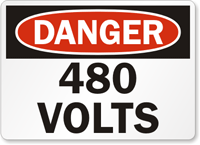
Warning signs are orange with black (or a contrasting color) lettering or symbols. They are used to warn against hazards which aren’t quite as serious as those requiring a danger sign-but are more serious than those requiring a caution sign. Warning signs may alert us to forklift traffic or similar hazards.
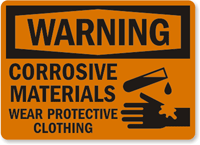
Caution signs must be used only to warn against potential hazards or to caution against unsafe work practices. Caution signs are predominately yellow with a black (or contrasting color) panel at the top of the sign. The word “caution,” written in yellow appears on the panel. The lower part of the sign is used for additional wording which must be written in black (or a contrasting color). Caution signs warn of numerous hazards-everything from slippery floors to reminding us to wear safety glasses. Even traffic signals take a cue from the yellow caution sign as they warn us to be careful on the road.
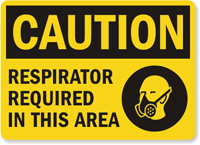
Special signs are used just for biological hazards and radiation hazards. The biological hazard (biohazard) sign is fluorescent orange or orange-red with letters or symbols in a contrasting color. The biohazard sign alerts us to the presence or potential presence of blood or other biological hazards.
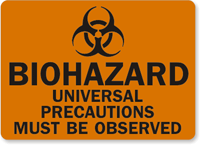
Radiation hazards are identified with a sign bearing the familiar three-bladed radiation symbol in black or magenta or red on a yellow background.
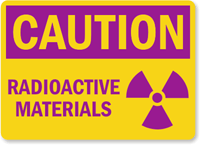
Safety instruction signs are used to provide information about safety. They are not used to warn against specific hazards. These green and white signs remind you to report accidents, help locate first-aid equipment, and direct you along an evacuation route.
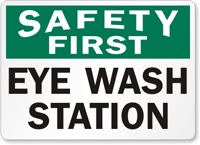
Though signs are never a substitute for good safety procedures and training, they are useful to remind us of hazards and ways we can protect against them. Always take seriously the information on a sign-whether in the workplace or on the road. Understanding signs and the hazards they warn us about can help prevent injuries and save lives.